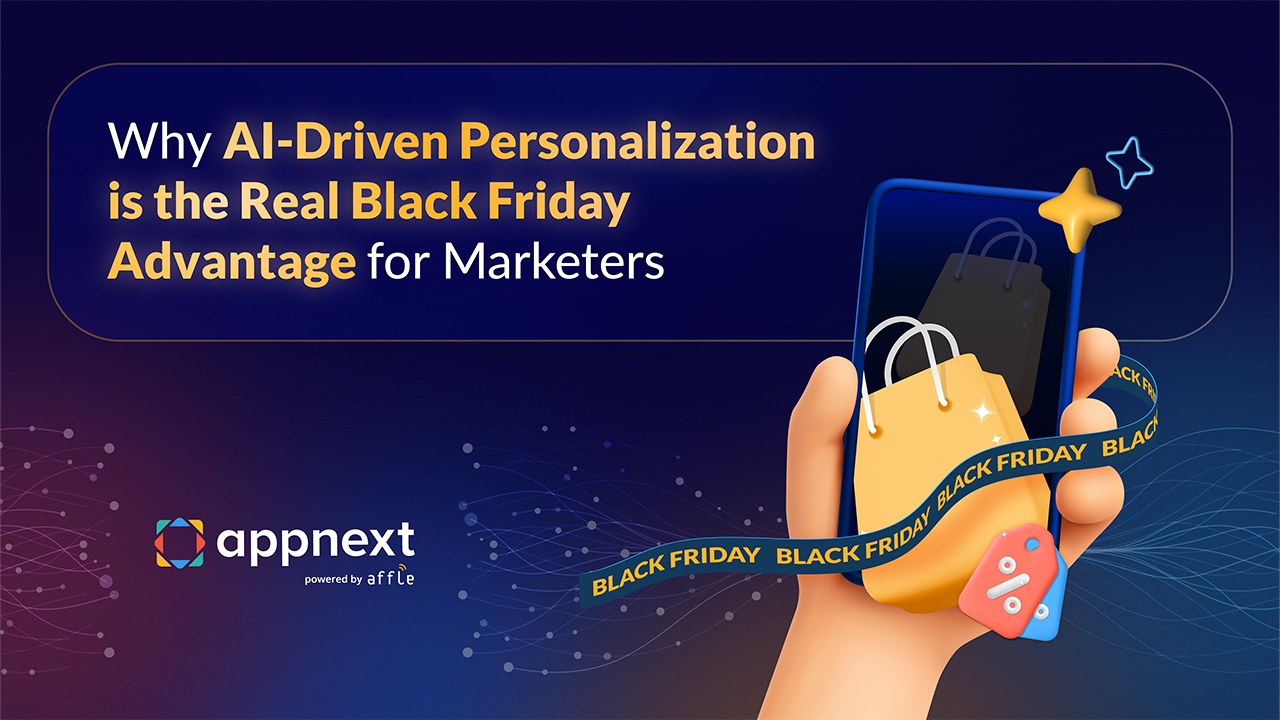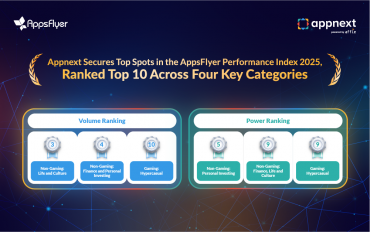
Black Friday isn’t about convincing people to spend. They’re already here for it. Globally, shoppers spent $74.4 billion on Black Friday last year, part of a massive $314.9B Cyber Week. They are loading carts, comparing options, and “Buy Now, Pay Later” (BNPL) services are fueling the fire, driving $686.3 million in sales alone in the US.
The problem isn’t traffic; it’s conversion. Your user has three of your competitor’s apps open, and everyone is shouting in this sea of noise, the real advantage isn’t shouting louder. It’s using AI-driven personalization to be the right voice at the right moment.
The Conversion Blind Spot: Carts Are Full, But So Are Inboxes
The modern Black Friday shopper is high-intent. They’ve done their research. Their cart is loaded. But so is their email inbox. This is where most mobile marketing strategies fail.
A generic “We miss you!” WhatsApp message is just one of a hundred. It’s ignored. The real battle happens at the point of decision. Cart abandonment isn’t happening from a lack of interest; it’s happening from friction, distraction, or a competitor’s slightly more relevant offer. You aren’t just fighting for attention; you’re fighting to close a deal that’s 99% complete.
From “Broad” to “Specific”: AI Personalization as the Closer
This is where you need to be smarter. “Standard” marketing segments users into broad buckets like “shoppers who bought last year.” It’s better than nothing, but it’s still a guess.
AI-driven personalization is a scalpel. It works in real-time to understand 1-to-1 intent.
- Standard Offer: “20% Off All Electronics!”
- AI-Personalized Offer: “We see you have the X-15 headphones in your cart. Complete your audio setup with the matching travel case and get 25% off both.”
One is a generic flyer. The other is a solution. It anticipates the user’s next need, bundles a relevant product, and frames the discount as a smarter way to buy. This is what predictive AI does: it stops trying to retarget and starts trying to help.
Q: What’s the real difference between AI personalization and good segmentation?
A: It’s the difference between “then” and “now.”
- Segmentation is batching: It groups users by past actions (e.g., “shoppers in their 20s” or “used a coupon last month”).
- AI Personalization is real-time: It acts on current intent and context (e.g., “this specific user is right now searching for BNPL options”).
The Result is a unique, 1-to-1 offer that solves a user’s immediate need, not a mass email to a large, generalized group.
The Delivery Channel
No matter how intelligent your personalization is, it’s only as effective as where it’s delivered. Email, social, push, and in-app notifications each play a role but most rely on the user opening, scrolling, or searching first. In today’s attention-deficit environment, even the most tailored offer can get lost in clutter. That’s why marketers are moving closer to the point of intent itself, the device. Among all available channels, OEM-based discovery stands out as the most direct, privacy-safe, and contextually relevant route to reach users exactly when they’re ready to act.
Why OEM Ads Win the Moment of Intent
The most brilliant personalized offer is useless if it’s buried in a spam folder. The real estate that matters isn’t the inbox; it’s the device itself.
This is where Mobile App discovery on the device changes the game. We’re not talking about annoying pop-up banners. OEM ads are native placement recommendations that appear in smart folders, on the lock screen, or in the device’s own search bar. With Appnext’s patented AI powered timeline technology brands can leverage user signals to create personalized campaigns.
When a user’s intent is high (they’ve been browsing for travel deals), your “all-in-one” travel app can be recommended contextually. This isn’t an interruption. It’s a helpful suggestion that guides their user acquisition journey. You are placing your app directly in the user’s natural path, at the exact moment they are looking for a solution.
Beyond the Sale: Turning a Black Friday Deal into Loyalty
Black Friday is transactional. Loyalty is the grand prize.
When an app gets you it suggests the right accessory, offers a relevant BNPL option at checkout, and doesn’t spam you with junk you start to trust it. That trust is what brings them back in January.
A smart personalization strategy doesn’t just win the sale; it wins the customer. You acquire a user who wants to be there, which dramatically increases LTV and reduces churn. But the journey doesn’t end at checkout, the notification game begins. Contextual, well-timed push and in-app notifications can reignite interest, remind users of pending actions, or introduce complementary offers just when relevance peaks. Done right, this real-time re-engagement keeps the relationship alive long after the first conversion. That’s how you win the year, not just the day.
The Takeaway
The Black Friday prize won’t go to the brand with the biggest discount. It will go to the brand that is the most relevant. The battlefield has moved from the inbox to the device itself. AI-driven personalization is your playbook, and on-device mobile app discovery is how you win. Stop shouting, and start solving. Start your Black Friday Campaign with us, contact us now!
FAQs
1. What exactly is AI-driven personalization in mobile marketing?
- It’s a mobile marketing strategy that uses AI to analyze a user’s real-time, on-device behavior like apps they use, searches they make, or even their location.
- Instead of broad segments, it creates a unique profile for each user.
- This allows your brand to deliver a specific, 1-to-1 offer or app recommendation that is hyper-relevant to what that user is doing right now.
- Think of it as a personal shopping assistant for every user, anticipating their needs before they even ask.
2. How does personalization actually reduce cart abandonment?
- Cart abandonment is often caused by friction at the last second, like a surprise shipping cost or a moment of indecision.
- AI personalization can intervene at this critical moment with a highly relevant, timely nudge.
- For example, if a user hesitates at checkout, the system can trigger an offer for “Buy Now, Pay Later” (BNPL) or bundle a relevant accessory for a small extra discount.
- This removes the friction, reinforces the user’s purchase decision, and makes them feel understood, guiding them to complete the sale.
3. You mentioned OEM ads. What are they and how do they work for user acquisition?
- OEM ads are a form of on-device advertising integrated directly by the Original Equipment Manufacturer (OEM)—the brand that made the phone (like Samsung, Xiaomi, etc.).
- They appear in native placements like smart folders, device search, or on the lock screen, feeling like a helpful part of the phone’s interface.
- For user acquisition, this is incredibly powerful. It allows you to present your app to a user at a moment of high intent, before they even open a traditional app store.
- It’s a “pull” strategy, not a “push,” which results in higher-quality installs.
4. Why is on-device Mobile App discovery better than just sending more emails?
- The email inbox is an oversaturated, “red ocean” environment where you compete with hundreds of other brands for a single click.
- On-device Mobile App discovery is a “blue ocean.” It’s contextual and integrated into the user’s daily habits.
- When a recommendation for your app appears as a user is searching for a related topic, it doesn’t feel like an ad; it feels like a solution.
- This cuts through the noise, captures intent at its peak, and leads to a much cleaner, more effective user acquisition path.
5. Does this degree of personalization make users uncomfortable?
- It’s a valid concern. The line between “helpful” and “creepy” is all about trust, value, and context.
- Intrusive personalization often relies on third-party tracking that follows users across the web with no clear value.
- Effective, ethical personalization especially on-device focuses on contextual signals (like their immediate search) and zero-party data (preferences a user shares).
- When the recommendation is directly relevant to the user’s current action, it’s perceived as helpful, not invasive. It’s about solving their problem at the moment.



Comments are closed.